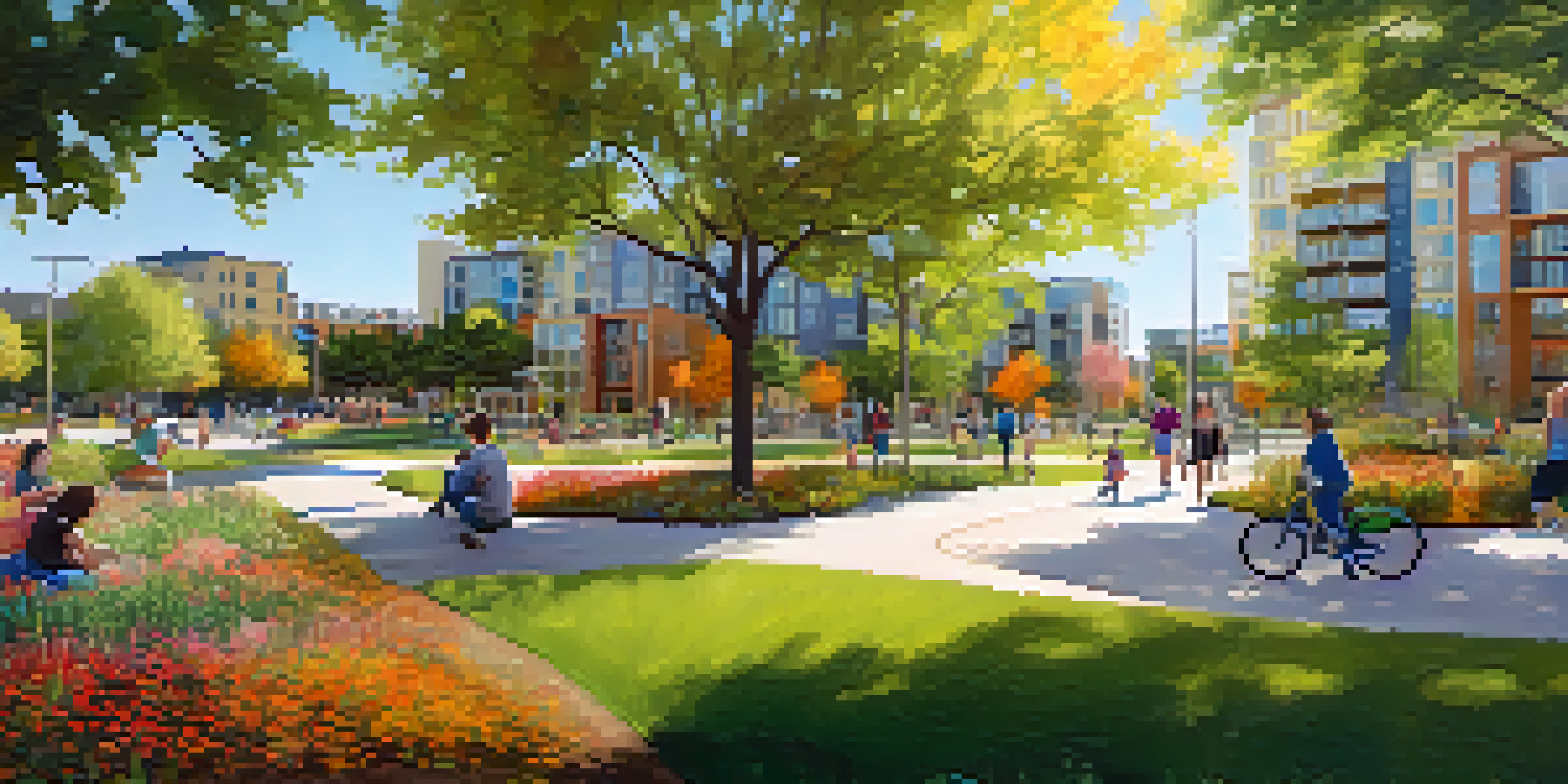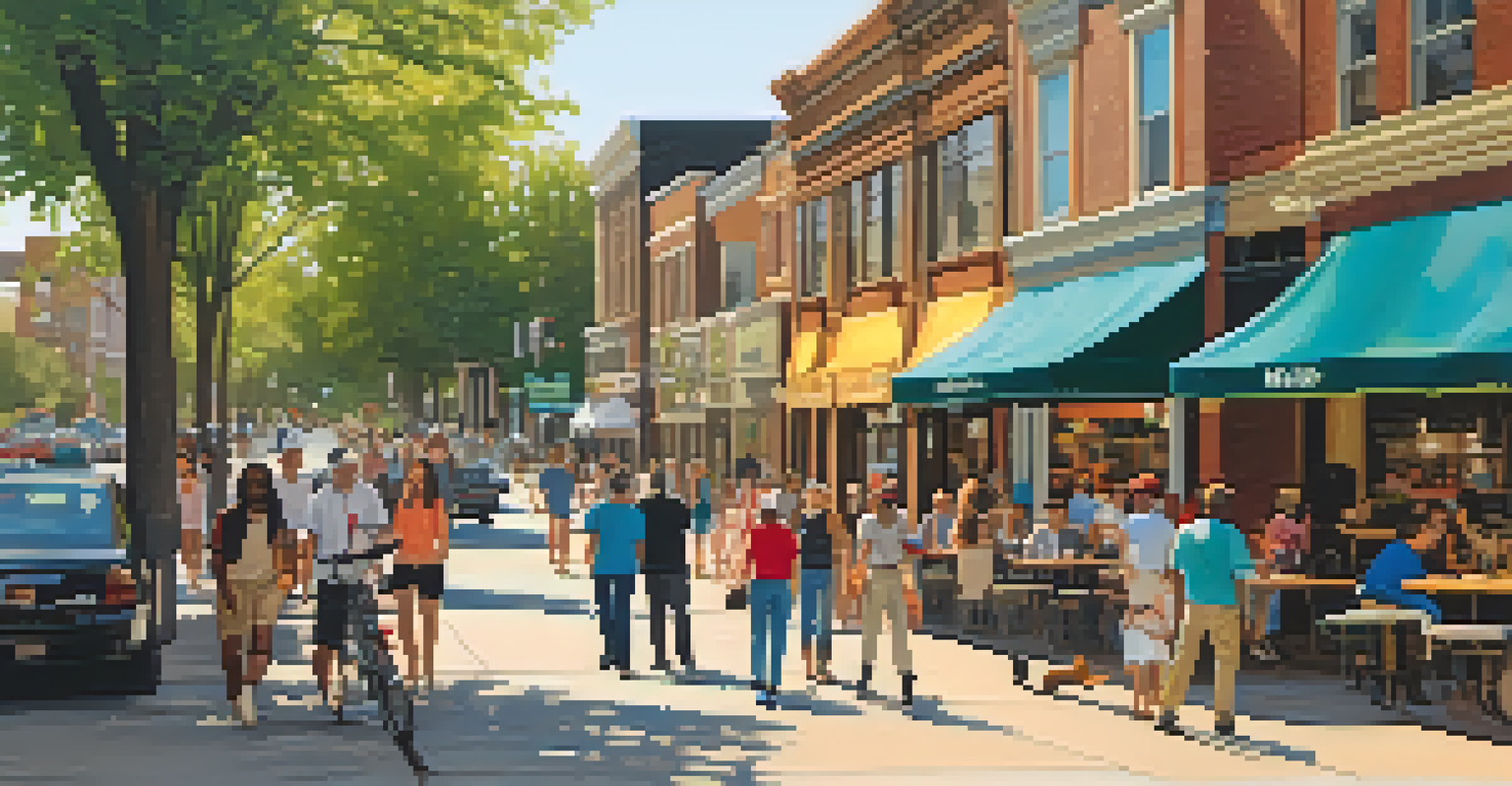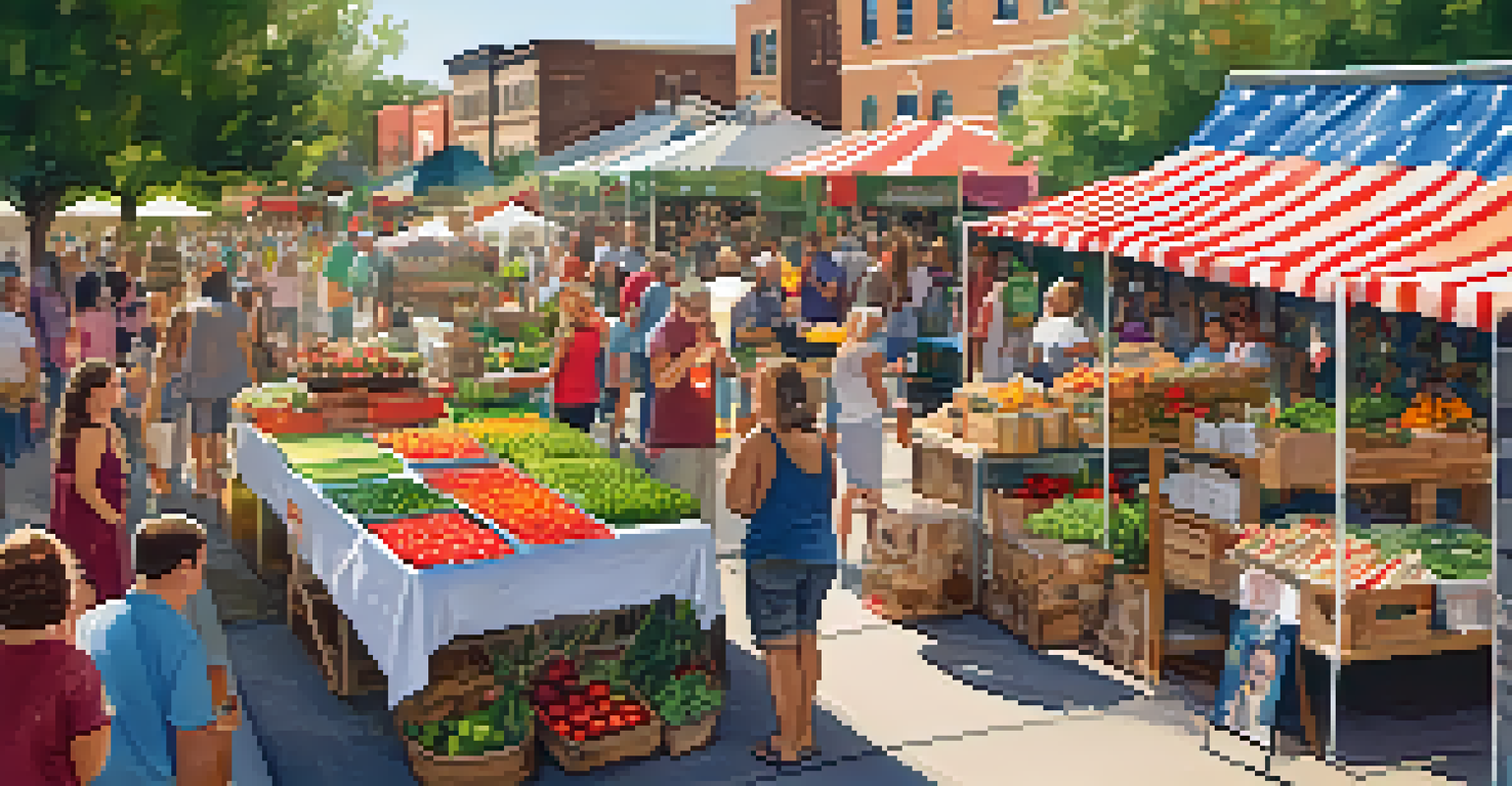The Historic Significance of the Mueller Development

Origins of the Mueller Development: A Historical Overview
The Mueller Development, located in Austin, Texas, has a rich history that dates back to its origins as the site of the Robert Mueller Municipal Airport. Opened in 1930, this airport served as a vital transportation hub for the region until its closure in 1999. This transition from airport to community development symbolizes a shift in urban planning and public investment in Austin.
A city is not a mere collection of buildings; it is a community of people, and it is the connections we make that create the essence of our urban spaces.
After the airport's closure, the City of Austin had a significant task ahead: transforming the 711 acres of land into a vibrant, mixed-use community. This transformation was not just about buildings and streets; it aimed to create a sustainable environment that fosters social interaction and economic growth. The vision was to blend residential, commercial, and recreational spaces seamlessly.
Today, the Mueller Development stands as a testament to successful urban renewal, showcasing how former industrial or commercial spaces can be revitalized. It reflects the growing need for sustainable living while preserving the historical context, making it a model for future developments in urban areas.
Key Features of the Mueller Development: A Closer Look
One of the standout features of the Mueller Development is its commitment to sustainability. The community is designed with green spaces, parks, and environmentally friendly buildings that promote energy efficiency. This approach not only enhances the quality of life for residents but also sets a standard for future developments across the country.

In addition to its sustainability initiatives, the development includes a diverse range of housing options that cater to different demographics. From single-family homes to multifamily units, the Mueller Development fosters an inclusive environment. This diversity is essential for creating a sense of community, encouraging interaction among residents from various backgrounds.
Sustainable Community Design
The Mueller Development exemplifies a successful blend of residential, commercial, and recreational spaces with a strong focus on sustainability.
The inclusion of commercial spaces also plays a crucial role in the development's success. With shops, restaurants, and community services integrated into the design, residents have convenient access to essential amenities. This thoughtful planning reduces reliance on cars, promoting a walkable neighborhood that enhances the overall lifestyle of its inhabitants.
Cultural Impact: The Mueller Development's Community Spirit
Beyond its physical attributes, the Mueller Development thrives on its vibrant community spirit. Events and festivals are regularly held in the area, allowing residents to engage with one another and foster relationships. This sense of belonging is vital in today’s fast-paced world, where community ties often get overlooked.
Sustainability is not a choice anymore; it’s a necessity. Our cities must adapt to the realities of climate change and urbanization.
Art and culture are also integral to the Mueller Development. Public art installations and cultural events help to enrich the community's identity and provide a platform for local artists. This focus on artistic expression enhances the neighborhood's appeal and attracts visitors, further stimulating local businesses.
Furthermore, the development has nurtured a strong sense of social responsibility among its residents. Initiatives like community gardens and local clean-up efforts encourage residents to take pride in their environment. This commitment to social and environmental stewardship reflects the core values of the Mueller Development, promoting a holistic approach to community living.
Economic Growth: The Mueller Development's Role in Austin
The economic implications of the Mueller Development are significant, as it serves as a catalyst for growth in Austin. The development has attracted new businesses, creating job opportunities and stimulating the local economy. This influx of commerce has had a ripple effect, contributing to the city's overall prosperity.
Moreover, the strategic location of the Mueller Development, near major highways and public transportation, enhances its economic viability. Businesses benefit from increased foot traffic and accessibility, making it an attractive destination for both entrepreneurs and consumers. This synergy between residential and commercial spaces fosters a thriving economic environment.
Community Engagement Matters
Involving residents in the planning process was crucial for the Mueller Development, ensuring the project met their needs and aspirations.
As Austin continues to grow, developments like Mueller play a crucial role in shaping the city's future. By prioritizing mixed-use spaces and community engagement, the Mueller Development sets a precedent for sustainable urban growth. Its success story is a model for cities looking to balance economic development with community well-being.
Challenges Faced During the Development Process
While the Mueller Development is often celebrated for its successes, the journey was not without challenges. One significant hurdle was the need to balance the desires of local residents with urban planning goals. Engaging the community in the planning process was essential to ensure that development met the needs of its future inhabitants.
Additionally, navigating the complexities of zoning laws and regulations posed challenges. The developers had to work closely with city officials to obtain the necessary permits and approvals. This often lengthy process required patience and persistence, but ultimately resulted in a well-planned community that reflects the aspirations of its residents.
Financial constraints also presented obstacles, as urban development projects often require substantial investment. Securing funding while maintaining affordability for residents was a delicate balancing act. However, through innovative financing and partnerships, the Mueller Development was able to overcome these challenges and create a successful model for future projects.
Lessons Learned from the Mueller Development Experience
The Mueller Development offers valuable lessons in urban planning and community engagement. One of the most important takeaways is the significance of involving the community throughout the development process. Gathering feedback and addressing concerns can lead to more successful outcomes that truly reflect the needs of residents.
Another lesson is the importance of sustainability in modern development. Incorporating eco-friendly practices not only benefits the environment but also enhances the livability of communities. This forward-thinking approach is increasingly relevant as cities grapple with climate change and urbanization challenges.
Economic Catalyst for Austin
The Mueller Development has significantly boosted the local economy by attracting businesses and creating job opportunities in Austin.
Lastly, the Mueller Development demonstrates how mixed-use spaces can create vibrant communities. By integrating residential, commercial, and recreational areas, developers can foster a sense of belonging and enhance residents' quality of life. These lessons can guide future developments, ensuring they are not just buildings, but thriving communities.
Future Prospects: The Ongoing Evolution of Mueller Development
As the Mueller Development continues to grow, its future prospects look promising. Ongoing projects aim to expand housing options and enhance community facilities, ensuring that it remains a desirable place to live. This commitment to evolution reflects the dynamic nature of urban living, where communities must adapt to changing needs.
Moreover, the development serves as a model for other cities looking to revitalize similar areas. As more urban centers strive for sustainability and community engagement, the lessons learned from Mueller can guide their efforts. This ripple effect of knowledge-sharing can lead to a broader movement towards thoughtful urban renewal.

Ultimately, the Mueller Development is more than just a neighborhood; it symbolizes a shift in how we think about urban spaces. Its focus on sustainability, community, and economic growth sets a standard that other developments can aspire to. As it evolves, the Mueller Development will continue to inspire and shape the future of urban living.